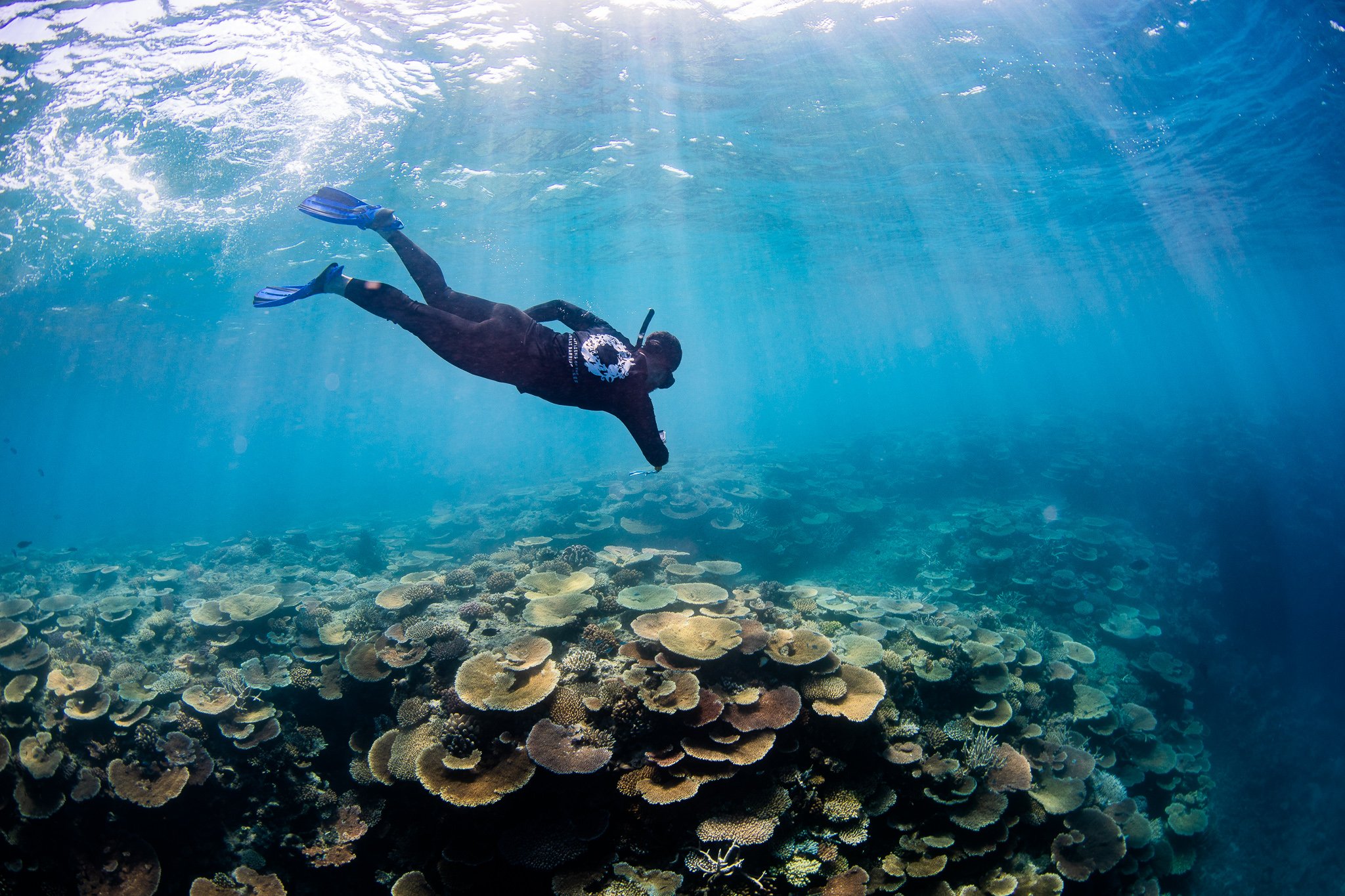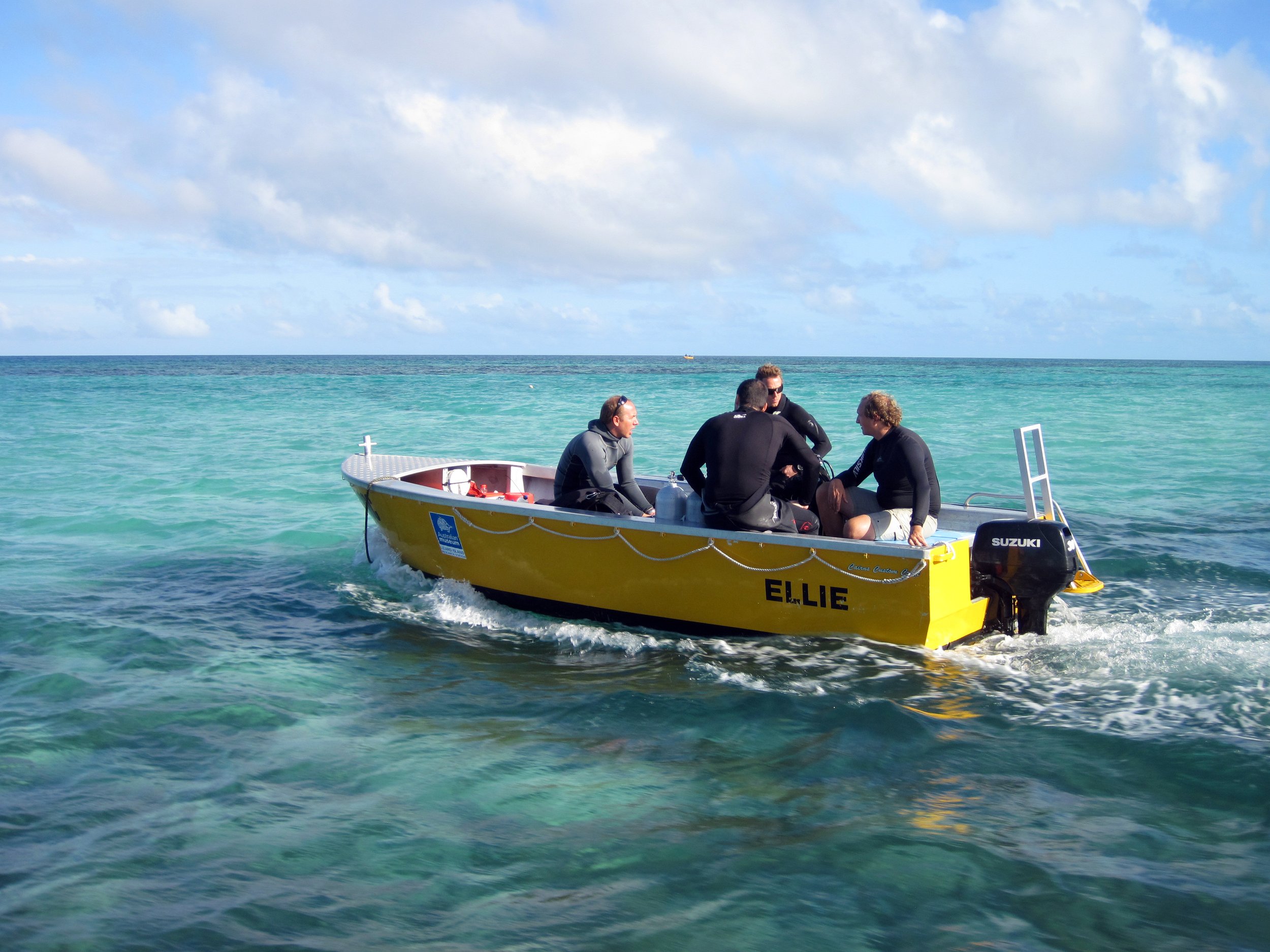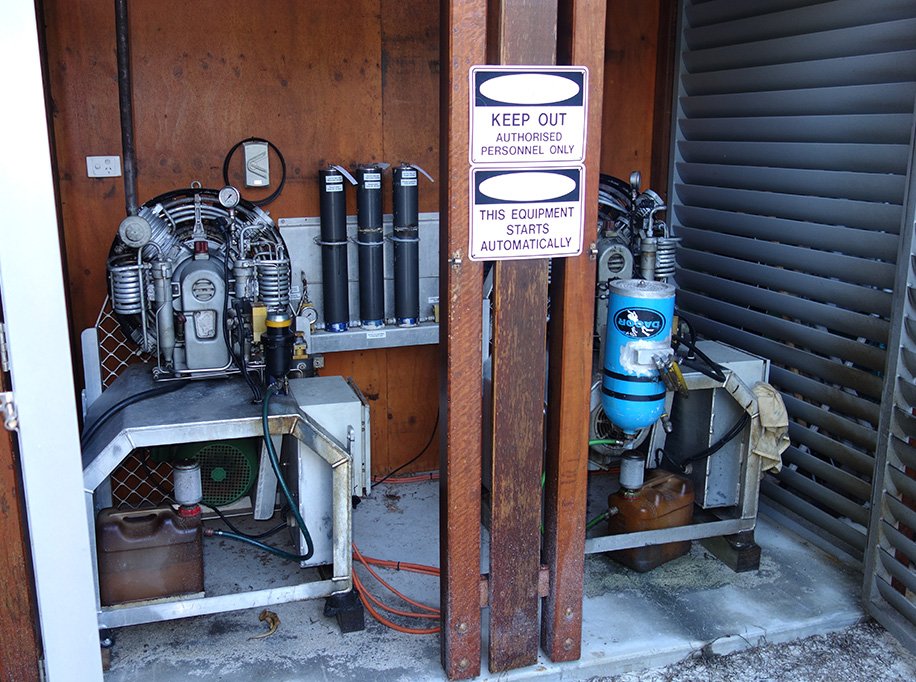
Impact Report 2022
Report from the Supported Organisations & Their Programs
We're thrilled to share that, with your support and generosity, we raised an incredible $1.33 million for ocean conservation in 2022. We're proud to say that every dollar raised was donated in full to these five incredible charities dedicated to protecting our oceans and the Great Barrier Reef. With your support, we've been able to make a tangible difference in the fight for a healthier, cleaner ocean. We're excited to provide you with this impact report to showcase the real impact your donations have made.
Report Date: 16 March 2023
The Sapphire funds supported the Queensland Blue program exploring the restoration of coastal wetlands and their carbon sink capacity across Queensland, focusing on the Great Barrier Reef catchments.
As part of Queensland Blue program (#QLDBlue), Deakin’s Blue Carbon Lab has been working with academics, government, industry, and institutions in Queensland to map, identify and prioritise opportunities for blue carbon restoration within the Great Barrier Reef catchments. The Sapphire Funds are directly supporting two research priorities within this multi-year program:
Develop a spatially explicit analysis to estimate the carbon potential abatement in QLD from different management actions and their associated co-benefits; which will guide the identification of the priority areas for blue carbon restoration.
Understand the amenability of QLD coastal stakeholders to the implementation of blue carbon restoration projects using the ERF’s blue carbon method.
Key Achievements in 2022:
Design the spatial analysis and collation of the following datasets: blue carbon stocks, carbon sequestration, nitrogen stocks and sequestration, land use cover, and distribution extent of blue carbon ecosystems.
Development of an online questionnaire to consult QLD stakeholders on their understanding of coastal wetlands and their willingness to develop blue carbon restoration projects.
Delivery of a Blue carbon webinar to more than 30 QLD landholders (in collaboration with WeAct). The webinar discussed potential opportunities to restore coastal wetlands on private property using the ERF’s blue carbon methodology.
Field sampling and quantification of blue carbon stocks on Yirrganydji land in collaboration with Dawul Wuru Aboriginal Corporation.
Planned Activities for 2023:
Finalise the spatial analysis on blue carbon and potential co-benefits provided by coastal wetland restoration in QLD.
First-class identification of ‘best’ sites for blue carbon restoration within the Great Barrier Reef catchments.
Engagements with multiple industry representatives and stakeholders to evaluate their amenability and support to blue carbon restoration.
Recruitment of a social scientist to work with QLD landholders and understand the main challenges and barriers for blue carbon project implementation in QLD.





The Sapphire funds enabled Citizens of the Great Barrier Reef Foundation (CGBR) to launch its third Great Reef Census. The funding helped deliver both the marine operations for this massive effort and the development of the technology platform for analysis engagement with school students in Australia and citizen scientists across the world, to further expand the program to more priority reefs across a 2,300km stretch of the Great Barrier Reef and solidify the science and conservation impact of the program.
With the marine operations just concluding in early 2023, the Great Reef Census has now surveyed an unparalleled 3,230 sites across more than 510 individual reefs, generating more than 75,000 images, creating one of the largest ever broadscale reconnaissance pictures across the Great Barrier Reef. The reefs surveyed are equivalent to 15% of all reefs within the Great Barrier Reef Marine Park. Before the Great Reef Census, as little as 5% of reefs were regularly surveyed. Funding from the Sapphire Project has taken us to more remote yet crucial parts of the reef never surveyed before, and aided in the development of technology that can turn around crucial data on how the reef is changing year-on-year to scientists and reef managers.
The Great Reef Census has now solidified itself as one of the world’s largest marine surveys in both data collected and the geographical scale of its operations.
In tandem with the marine operations, CGBR has been developing a next-generation analysis platform to better allow citizen scientists across the to help in the verification of crucial coral identification on Census images. Since receiving the funding from the Sapphire Project, Citizens has also conducted three major trials of a deep learning model developed by DELL Technologies to make it quicker and easier to label the coral types listed by scientists as crucial for directing protections to reefs within the Marine Park.
The first trial was with more than 100 Cotton On staff in Geelong, with the learnings then being implemented for the second trial with 200 Optus staff visiting Moore Reef off Cairns. From there, a third and highly successful school program was launched at 5 schools in QLD and NSW which turned around the analysis of more than 24,000 images using our new deep learning technology.
This program has paved the way for the Great Reef Census: Education and Analysis to reach schools around the world. The project has attracted interest from Disney, Dell, Microsoft and PADI, and will be featured in a soon-to-be-released Stan Original documentary, Reefshot.












The Sapphire Funding has supported the following crucial programs:
· Fellowships program
· COTS control research
· LIRS research equipment and infrastructure
FELLOWSHIP PROGRAM
All the research fellowships are studying what happens to reefs under stress. This is vital knowledge to help researchers and reef managers in their task of helping reefs recover. The COTS (Crown-of-thorns starfish) research is seeking ways to identify the beginning of COTS outbreaks so that early control action can be taken. A second facet of research seeks to understand the mechanisms by which larval stages of COTS grow and survive. The aim is to identify potential vulnerabilities to target.
We have allocated part of the Sapphire funding for further research fellowships and grants. We shall be advertising for these later in 2023 and the awards will be finalised in early 2024.
COTS CONTROL
In recent years, we have provided 20 grants for COTS research. We are continuing that research with a 2023 grant to Prof Morgan Pratchett, partly funded by money from the Sapphire Project. (The photos show Prof Morgan Pratchett, heading out searching for COTS at Lizard Island. Other photos show Morgan in the aquarium where he has COTS in the tanks.)
RESEARCH EQUIPMENT AND INFRASTRUCTURE
The Sapphire funding is used to support a wide variety of important equipment required to keep the research station functioning in first-class order. The significance of the infrastructure at the Lizard Island Research Station (LIRS) is best summarised by the following quote from Dr. Lyle Vail AM & Dr Anne Hoggett AM, Directors of the Research Station since 1990. Upon their appointment, they said: “We see the Lizard Island Research Station improving its already excellent reputation as a facility for marine research on the Great Barrier Reef. We want it to become the preferred venue for coral reef research by scientists from all over the world. This can be achieved by ensuring that the environment is maintained in near-pristine condition and by providing superior research and housing facilities”.
Anne & Lyle have achieved their objective. Maintenance and replacement of the infrastructure at LIRS is a critical element of their success. Examples of work to be undertaken in 2023/24 are:
Reconditioning one of the compressors used for filling scuba tanks. More than 3,000 dives are performed at LIRS each year, so the compressors are absolutely vital.
Replacement of the cool room. The existing cool room is about 17 years old and is in constant use. Food for researchers arrives by the fortnightly barge so it is stored in the cool room until the researchers arrive, up to 13 days later.
Conversion of all gas equipment to electricity. Already LIRS is 96% self-sufficient in solar power but gas is still used in houses for cooking. The objective is to replace the equipment still using fossil fuels with electrical equipment powered by solar.
Air conditioners are essential in a number of laboratories. There are several that will be replaced this year.
There are many microscopes at LIRS. These are serviced annually.
Maintaining and replacing research boats and outboard motors is an ongoing commitment.
Maintenance of housing for researchers and staff.
The remaining Sapphire funds will be allocated to some of the above infrastructure work. We shall advise the exact allocation of funds when the final acquittal statement is prepared.





The Sapphire Funding expanded Take 3’s important education programs – particularly making these programs available to more regional and rural youth. The funding is allowing Take 3 to develop updated, interactive and relevant educational materials and content which is appealing to youth audiences, as well as proactively connecting with regional youth audiences via targeted program delivery.
A great example of this was their recent 2-day Youth Summit: ‘Youth Leading the Way’ exploring the concept of leadership through the lens of plastic pollution. Based on the UN Sustainable Development Goals, students explored what makes a leader, the causes and effects of plastic pollution, and how to lead others to solutions.
Take 3 inspired our young Change Makers to take action and design actionable solutions through a personal action plan.
Another recent example, hosted by their partners at Taronga Western Plains Zoo and held face-to-face in Dubbo, students and teachers attended from across the Central West of NSW (Many of the students were also from first nations communities):
· Central West Leadership Academy, Dubbo. NSW
· Kandos HS , Kandos. NSW
· Cobar HS, Cobar. NSW
· St John's College, Dubbo. NSW
· Wilcannia Central School, Wilcannia. NSW
· TPWZ Cultural & Community Team ( Dubbo College). NSW
· Individual Students Central Coast, NSW
· Yeoval HS, Yeoval. NSW
The funding continues to enable Take 3 to further enable local groups and organisations to run their own beach clean-ups; educate youths and seniors about the problem of plastic pollution; provide resources for running beach clean-ups and reporting marine debris data; and inspire youth leaders to protect coastal and marine wildlife.






Girringun developed Australia’s first Traditional Use of Marine Resources Agreement in the Great Barrier Reef Marine Park and now manages an Indigenous Protected Area spanning 1.26 million hectares of land and sea. This includes parts of the Wet Tropics World Heritage Area, the Great Barrier Reef and the Great Barrier Reef World Heritage Area. Girrungun’s work ensures that traditional management practices and knowledge are both recognised and incorporated strategically and on-ground to help keep Country and culture healthy and strong across their nine Traditional Owner groups.
The Sapphire funding is enabling Girringun to run a Junior Rangers program for school-age children spanning the geography of 9 different Traditional Owner groups along the Queensland coast. This program builds a localised cultural curriculum for indigenous and non-indigenous kids to engage in caring for Country. The rangers play a key role in the preservation of traditional ecological knowledge, maintaining significant cultural heritage sites like the Great Barrier Reef, participating in research activities and raising the profile of Aboriginal natural and cultural resource management in the area through community liaison.




“We are the first generation to feel the effects of climate change, and the last generation who can do something about it.”
Barack Obama





